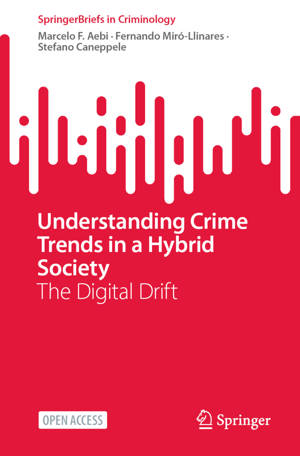
- Afhalen na 1 uur in een winkel met voorraad
- Gratis thuislevering in België
- Ruim aanbod met 7 miljoen producten
- Afhalen na 1 uur in een winkel met voorraad
- Gratis thuislevering in België
- Ruim aanbod met 7 miljoen producten
Understanding Crime Trends in a Hybrid Society
The Digital Drift
Omschrijving
This open access book critically revisits 30 years of debate surrounding the evolution of crime trends, aiming to reconcile various hypotheses and controversies. It scrutinizes the concept of the "crime drop," highlighting the methodological pitfalls in understanding the causation mechanisms behind this phenomenon. By examining the impact of information and communication technologies (ICT) on daily routines and crime, the book challenges traditional notions of crime reduction.
Drawing on extensive examples, data from official and non-official statistics, and crime surveys, this book illustrates how cyberspace has fundamentally reshaped the nature of crime. Despite this transformation, integrating cybercrime into conventional crime statistics remains an unaccomplished task. The book offers a thorough methodological discussion on measuring cybercrime, addressing the challenges researchers face in quantifying and explaining crimes committed both in cyberspace and across physical and digital boundaries.
This book speaks to students, academics, researchers, and practitioners in the fields of criminology, criminal justice, and cybercrime. It is an invaluable resource for anyone seeking to understand the complexities of modern crime trends and the challenges posed by the digital age.
Specificaties
Betrokkenen
- Uitgeverij:
Inhoud
- Aantal bladzijden:
- 133
- Taal:
- Engels
- Reeks:
Eigenschappen
- Productcode (EAN):
- 9783031723865
- Verschijningsdatum:
- 8/02/2025
- Uitvoering:
- Paperback
- Formaat:
- Trade paperback (VS)
- Afmetingen:
- 155 mm x 235 mm

Alleen bij Standaard Boekhandel
Beoordelingen
We publiceren alleen reviews die voldoen aan de voorwaarden voor reviews. Bekijk onze voorwaarden voor reviews.











